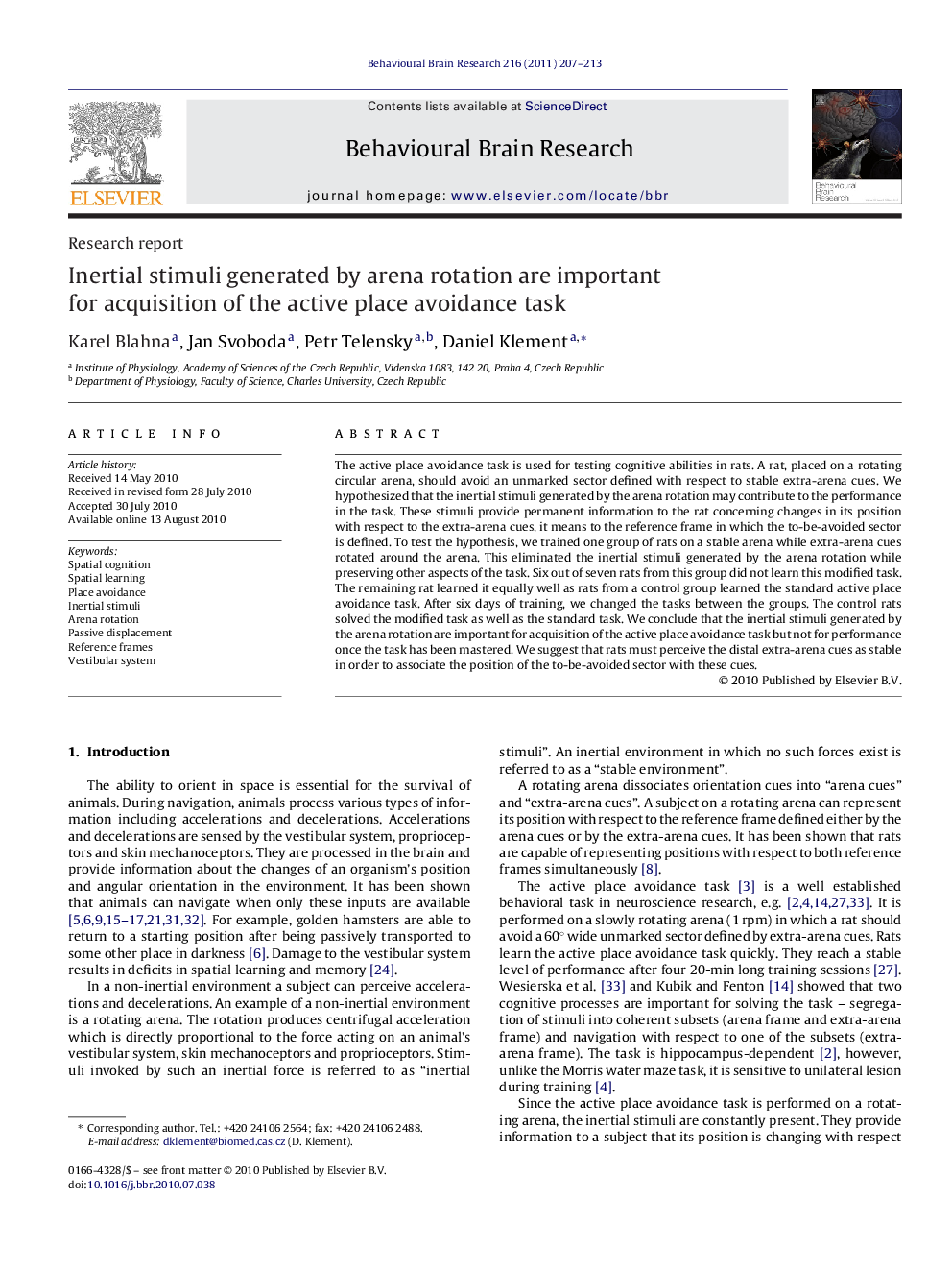| Article ID | Journal | Published Year | Pages | File Type |
|---|---|---|---|---|
| 4314001 | Behavioural Brain Research | 2011 | 7 Pages |
The active place avoidance task is used for testing cognitive abilities in rats. A rat, placed on a rotating circular arena, should avoid an unmarked sector defined with respect to stable extra-arena cues. We hypothesized that the inertial stimuli generated by the arena rotation may contribute to the performance in the task. These stimuli provide permanent information to the rat concerning changes in its position with respect to the extra-arena cues, it means to the reference frame in which the to-be-avoided sector is defined. To test the hypothesis, we trained one group of rats on a stable arena while extra-arena cues rotated around the arena. This eliminated the inertial stimuli generated by the arena rotation while preserving other aspects of the task. Six out of seven rats from this group did not learn this modified task. The remaining rat learned it equally well as rats from a control group learned the standard active place avoidance task. After six days of training, we changed the tasks between the groups. The control rats solved the modified task as well as the standard task. We conclude that the inertial stimuli generated by the arena rotation are important for acquisition of the active place avoidance task but not for performance once the task has been mastered. We suggest that rats must perceive the distal extra-arena cues as stable in order to associate the position of the to-be-avoided sector with these cues.
Research highlights▶ Inertial stimuli are critical for acquisition of the AAPA task. ▶ Inertial stimuli have no effect on performance once the AAPA task has been mastered. ▶ Formation of relevant associations likely requires stable distal cues in the AAPA.
